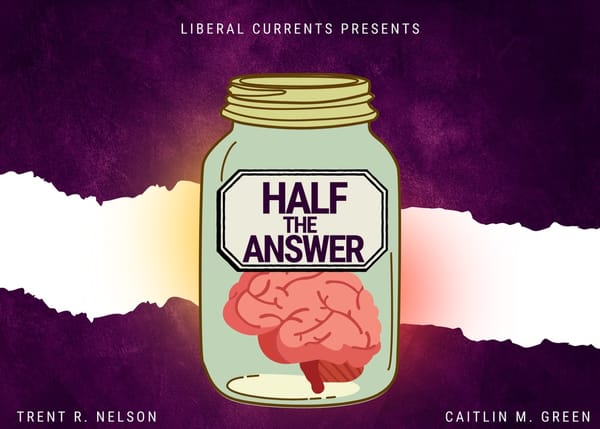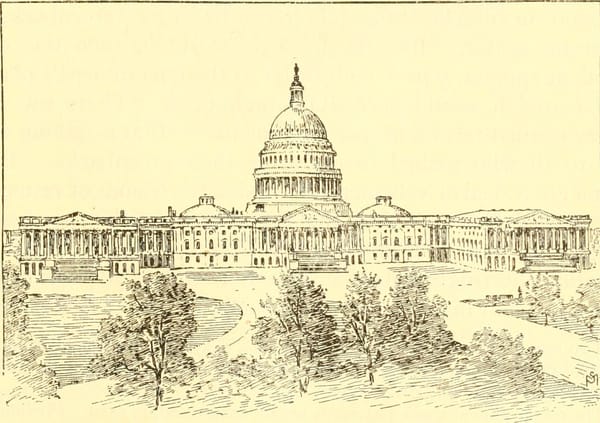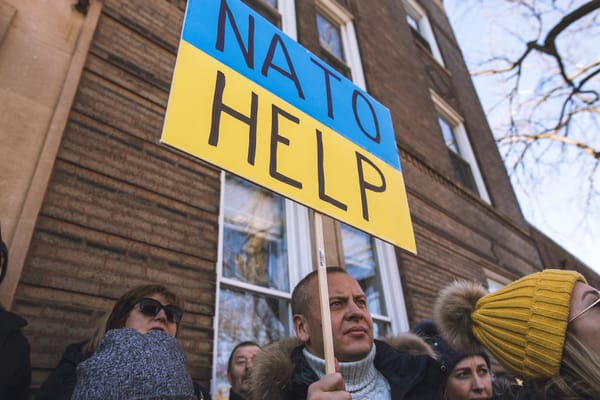Why Should the Poor Go Without the Infinite? Intellectual Property and Excludability

The novel coronavirus pandemic has thrown a lot of major political and economic issues into sharp focus. One of the greatest challenges of the pandemic is the endeavor to get the entirety of the world vaccinated. . Despite the production of several successful vaccines, many countries are still struggling to get vaccines and many people will struggle to pay for those vaccines. Part of the reason that the United States and several other wealthy countries have started purchasing vaccine doses and sending them to countries in need is that the countries would simply not have access to those vaccines otherwise.
Pandemic eradication is an international endeavor; pandemics (by definition) impact global populations, extending beyond the borders of countries. As we have seen over the last year, uncontrolled spread in one region threatens possible mutation and eventual spikes in other regions. Viruses do not carry passports and even insistence on testing people (who do) is an imperfect system and one that requires the cooperation of the public. Based on the number of flight attendants assaulted over trying to get people to wear masks, that cooperation is not forthcoming.
One major barrier to global vaccination is the producers of the vaccine themselves. While Pfizer-BioNTech and Moderna (among others) have successfully researched and produced safe and effective vaccines, they remain protective of the intellectual property and their control of this intellectual property means that other companies cannot manufacture these vaccines with license from the patent holders.
Jonas Salk saw polio eliminated in North America in his lifetime, as no cases have originated in the United States since 1979. Salk famously held that no one should hold the patent on the polio vaccine, “Could you patent the sun?” This meant that any company could manufacture the vaccine at a much lower cost. Part of the success of the global effort to eradicate polio was the easy accessibility of the vaccine; that’s hardly the whole story, but it is an important and no doubt necessary condition, especially in contrast to other, less successful efforts to administer such vaccines.
The issue around vaccine patents (and medical patents more generally) is often broken down into a simple two-fold issue. Vaccine producers are motivated by profit and the exclusive license is the way that they ensure their profit; vaccine producers have an ethical obligation not to withhold vaccines from those in need. The question is which of those two observations prevails.
Below I want to take a look into the philosophical heart of those positions; both are compatible, both can be preserved to a large extent, and the actual problems are not a tension between those two holdings, but the way in which they are exercised. It is wrong to think about profit-driven medical research (which has an important place in our society) solely in terms of exclusive patent-licensing.
The nature of intellectual property
Intellectual property can be held by anyone and everyone simultaneously. This distinguishes it from “ordinary” varieties of property, like physical objects, land use, and the like. Those ordinary forms of property are generally characterized (in part) by the requirement of exclusion, that ownership requires the right to exclude others from using the property.
Consider the distinction between the physical objects of pills and the intellectual object of chemical composition. There are a finite number of pills and how many pills can be taken is limited by that finite supply. If Sally has 300 pills, those are pills that Tom simply cannot have, unless Sally gives some of them away. This is a rough characterization of a rivalrous good; a good is rivalrous if the distribution of the supply is limited by the number of units, like the 300 pills. This stands in stark contrast to the intellectual property, like the knowledge of the chemical composition and manufacturing process for the pill.
If Sally gives Tom the pills, then Sally has fewer pills. If Sally explains the chemical composition and manufacturing process to Tom, then she can still have that information as well. Companies spent millions of dollars researching and developing COVID vaccines, including the cost of building up the infrastructure and community of researchers that are required for that research and development (like the mRNA technologies that are part of the base for major COVID vaccines). These companies argue that to recoup the cost, they are entitled to protect their intellectual property, to exclude others from accessing or using the chemical compositions and manufacturing process that developed. The exclusion of others from the intellectual property allows those companies to manufacture the vaccines themselves or license by agreement to certain manufacturers, and therefore profit off the manufacture.
This is the standard business model in pharmaceuticals and medical devices. A company researches and develops the drug and, by law, retains the exclusive control over the patents for a set period. (Typically patents for pharmaceuticals last for 20 years from when they were filed in the United States.) This is justified by the investment they poured into the research and development process and the fact that, as private companies, they need a profit incentive. They also need to be able to take risks and invest in projects that sometimes fail, that do not produce a product they can sell. We want companies to innovate these medical treatments, because we want to have the treatments and this is one way of satisfying the goal; if the motivation for private companies doing this research is profit, then so be it. However, using exclusive patent control as a means for getting that profit raises a range of ethical problems
Suppose that we grant that there is a place for private pharmaceutical research and that those pharmaceutical companies should make a profit on their projects. That still does not justify exclusive control over the intellectual property. Companies can be profitable and their research projects a good investment through alternative models which better serve the public interest and prevent a range of practical problems.
There are a few practical problems. One is that companies can gouge consumers on prices when they’re the only manufacturer; companies that control patents on certain medical treatments, especially treatments for which there is no alternative on the market are often in a position where they can just name their price. Sometimes insurers eat the cost; sometimes the government does; sometimes the patient does.
The mainstream case was the pharmaceutical Pyrimethamine (sold under the brand name Daraprim). The rights to Pyrimethamine were acquired by a company called Turing Pharmaceuticals, run by a scumbag named Martin Shkreli. In 2015, shortly after acquiring the rights, Turing Pharmaceuticals increased the price from $13.50 to $750 a tablet, increasing the cost of a course of treatment to $75,000. Pyrimethamine is a drug that is used to treat (among other things) toxoplasmosis; there are other available treatments for toxoplasmosis, but Pyrimethamine is an especially safe and effective treatment and is the only safe treatment for individuals who have certain co-morbidities, most notably HIV/AIDS. Litigation in New York state is ongoing.
To put it simply, companies with exclusive rights are uniquely positioned to gouge on pricing, precisely because their rights are exclusive.
There is a second problem, which is an international issue. In lots of countries, especially countries in the so-called “global south,” there is a need for lots of drugs which have proprietary patents held in the United States and Europe. Even at a relatively low price-point, they would still be prohibitively expensive for people living in those countries and even for the governments in those countries to purchase and distribute en masse. (As it turns out, there is price gouging in lots of these cases, as well.)
This puts those countries in a complicated and often dangerous position. One of the options for those countries is to outright refuse to recognize intellectual property protections, allowing black market versions of the product to be bought and sold in their country. Black market versions of the product may be unreliable or even actively dangerous; it also pisses off wealthy countries where the patent holders live and risks economic penalties and sanctions. African countries often saw black market drugs, but their import was illegal under international law. However, the alternative seemed to be outright rationing life-saving treatments.
Another option is just to bite the bullet and acknowledge the restrictions and ask for foreign support to offset the cost. This is a deeply distressing situation for any country and requires a government with which other countries can properly engage. Sometimes it works, but it puts those countries at the mercy of the economic and foreign policy of other countries.
A third option is to take drugs from other countries that are not as tightly quality controlled as (say) those manufactured in the United States. We have seen this with the Russian and Chinese varieties of the COVID vaccines, which aren’t as effective or safe as the American varieties. However, if you have no access to the American varieties because of their cost, then you might take the cheaper, worse drug instead.
None of these options are good.
The Lockean Proviso
The Lockean Proviso is a view laid out by Robert Nozick.
People maintain a property right over all created stuff so long as the property right does not make anyone worse off than they would have been in the natural state, if they are not left “enough, and as good” as they would otherwise have absent any action. The water rights cases establishes that this means: if the water would be preserved only in the presence of the aqueduct, then even the severe drought does not void the water right. The water right is only voided if the water would be present and accessible in the natural state. (This is a counterfactual consideration.)
Nozick’s view is that one is prohibited from making others worse off but is otherwise unconstrained. As long as acquiring property doesn’t make others worse off, then the property right obtains and individuals have a right to exclude others from using that property. A bottled water company that brings water to an area where there would otherwise be none can (therefore) refuse to give water to a person dying of thirst, because bringing the water to that area has not made the person worse off. The company maintains a right to their property and that includes excludability.
In the context of pharmaceuticals and medical devices, there is never going to be a voiding of the property right, even under the most extreme circumstances. A medical treatment is a thing that would never exist without the research base and so the natural circumstance of people suffering from the disease is for the disease to run its course. As such, no one can void the property right to the intellectual property governing the vaccine.
Some people may simply bite the bullet on these property rights. This is wildly unjust and ethically indefensible. If one has the ability to manufacture the drugs and allows those people to suffer and die in preservation of the rights to individual property rights, then the defense that “well, I had a right not to act” seems pretty weak-assed. Some people will make that defense, that individuals should never be compelled to act and that holding accountability for inaction is not philosophically acceptable. This requires a lot of philosophical commitments; one might be able to maintain the position even against the brutal cudgel of the moral intuition that people who stand by and let others die at only marginal costs to themselves are blameworthy.
The response to the position is simple enough. If you have the power to save someone at no or negligible cost to yourself (and the cost of manufacturing the drugs is negligible), then to fail to act is seriously morally wrong. One might quibble about what “negligible” costs are, or argue that the total cost may be quite high even when the per unit cost is low, but the cost of manufacture proper isn’t the issue in this case, because no one is requiring that the companies who hold the patents bear the cost of manufacture. Rather, the relevant cost here is the cost of allowing temporary waiving of the patent for those who otherwise would not be customers, and would just quite simply be dead.
The fact that, had you not been present or not had the power, they would still have suffered doesn’t count as a moral defense. This really pivots on a set of moral intuitions, so one’s mileage may vary around this argument.
The major proposal for addressing these sorts of policies is the implementation of local or particular waivers. In certain extreme humanitarian cases, such a policy would result in the waiving of patents on those goods with some compensation to the company. So, in the case of a COVID vaccine, the companies would have their patents waived in countries like India, which desperately need the vaccine, and allow Indian companies to manufacture the patent. In this case, a company like Moderna will be compensated in part out of an international fund and Indian companies will be allowed to manufacture the vaccine as though it were a generic.
There are a few problems with this.
The first is a particular problem applicable to some (but not all) cases, that happens to matter in the COVID case. In some of these cases, it may not actually be possible for local waivers to result in manufacture of the relevant product, because the companies that would be allowed to manufacture may not have the infrastructure to do so. For example, in the case of manufacturing the mRNA vaccines, manufacturing companies need access to certain technologies that are outside of the normal pharmaceutical repertoire. Such technologies are not easy to get in India or other countries that would like the waiver. Waiving the intellectual property protections doesn’t do anything if the companies can’t use the intellectual property.
Another problem, which applies in all cases, is that local waivers effectively gut a major reason for private companies to disclose details about their products at all: namely, by giving out the information on how to manufacture their product, it exacerbates the market in black market goods and damages the price (and therefore profitability) of the product. This doesn’t matter in the locality impacted by the waiver (because the goal was to suppress the price of the product), but it does matter everywhere else, where the company still wants to profit off of the exclusive license. If the process for manufacturing the vaccine is available in India, then companies in India can produce the vaccine, but remember that the distribution of the intellectual property (including composition and manufacturing processes) are not rivalrous, so the Indian company can resell or give away that information, or it can otherwise be acquired by competitors. This proliferation of information, which is promiscuous, makes it very difficult to convince private companies that their profitability can be maintained when local waivers are issued.
This is really the reason why Australia is likely to be pretty much alone in pushing for these sorts of waivers on the COVID vaccine among major powers. Most of the other powers in the world have their own variations of the vaccine and are jockeying for that market share.
Potential solutions
Here’s one possibility. Suppose that we create an international fund that pays out to companies that develop successful treatments. The companies would be prohibited from excluding manufacturers but would be paid out based on their successful products.
One way to assign the payouts would be based on the widespread need and manufacture, effectively paying out based on patients treated or doses manufactured. Cash incentives for based on use are not a good unilateral solution, because sometimes we actually want pharmaceutical companies to invest in solutions that target only a small percentage of people, but who are in extreme need. Some conditions are really bad and we should push for treatments to be developed, even if they only impact a small number of patients.
There are other ways to evaluate this potential pricing structure, but they would have to be more complicated and consider the necessity of the drug and its humanitarian impact, not just in terms of number of people treated. Focusing on the number of people treated would have a positive impact, in the sense that it would help develop treatments for conditions that are common throughout entire continents, especially when the financial incentive has kept the development of those treatments from being a priority. However, we also want to incentivize the development of treatments for conditions that are less common.
Breast, lung, and prostate cancers are the most pervasive, but we do not want to primarily or even solely pursue treatments for those kinds of cancer. We also want to ensure that we are pursuing treatment for pancreatic, liver, and thyroid cancers.
Developing a model that incentivizes a broad research program is valuable, but it also helps to steer these questions in the broad public interest.
When I talk to people about pharmaceutical research, one of the examples that comes up the most often is erectile dysfunction medication. The American pharmaceutical industry is invested to the tune of billions of dollars in erectile dysfunction medication; ED is a problem, but the fact that the investment there outstrips investment in other pharmaceuticals, because (white men, mostly) with ED can afford to pay higher prices and therefore make the product extremely profitable, is a problem.
One might argue that pharmaceutical research simply shouldn’t be privatized. That is a reasonable argument; as I have illustrated above, we do not even need to go that far to create a way of restructuring the incentive structure. Some hold that all research could be done as a part of the public sector. In theory, this is fine, but it requires a massive overhaul of the public sector for which the world is currently totally unequipped (and which is politically inviable); the proposal is theoretically possible, but not practically possible from our current situation. My point is simply that we can address this problem largely through institutions that already exist without a massive transformation in how scientific research currently works; if we can create that massive transformation (and there are lots of other reasons to think we should try), then that would be terrific. My proposal here is a pre-revolutionary one.
Above, I propose the use of a general fund to incentivize these companies to engage in research, providing public sector funding for private manufacturing, and basically having the public “buy” the patent outright in order to use it. This proposal is a variation on a theme in the medical economics literature, basically the idea that a monopsony (a market with only one buyer; in this case, the public buying intellectual property) is a way to secure appropriate and just access to the relevant technology.
This is not the only approach, just one of the simplest to understand and a way to highlight a few of the core ideas, including trying to limit profit-based development that privileges (for example) the boners of old white guys over the lives of poor Black kids.
There are other ways to approach this issue. One is to have a mandatory fee paid for licensing that can be subsidized outright. Suppose any manufacturer would be legally permitted to manufacture the vaccine (so none were excluded), but each was required to pay some independently fixed amount to the private company. Instead of allowing the market to set the price on vaccine licensing, the price can be set by an independent regulatory body with the explicit goal of balancing the two considerations. This disempowers the pharmaceutical developers from gouging or excluding but ensures that they will be compensated for doing so. There are some worries within this framework (like securing actual impartiality of any body at the intersection of the wildly corrupt worlds of pharmaceutical manufacturing and global economics), but there are ways to approach this issue.
In that case, the general idea is that the companies maintain a right to profit off of their research (maintaining the profit motive), but do not have a right to exclude others from use (ensuring that vaccine access can be effectively controlled).
Featured Image is Training on the Use of PPE




